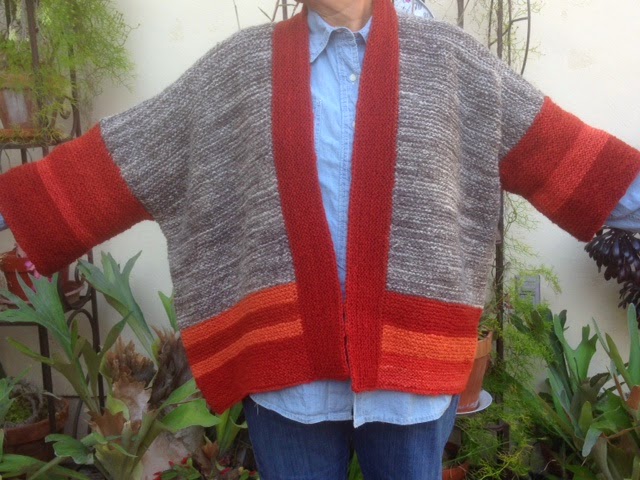I got myself back into it by making a couple of sets of dish towels. One actually ended up as dish towels, and the other was made into an apron. Then I set about weaving my handspun yarn.
Over the past couple of years, I had spun a lot of cotton. I dyed some of it with indigo, and wove several yards of striped fabric. I made this traditional Mexican blouse to wear while using the Spanish Colonial spinning wheel in Old Town. Some of the yardage has natural brown cotton as the weft, and some has indigo over brown cotton as the weft. Then I moved on to wool.
I wanted to make some sabanilla for Old Town San Diego State Historic Park. I had already made the embroidery yarn, so I decided to weave the background cloth for colcha embroidery. I did some research, spoke to some experts in New Mexico, and produced a few yards of this fabric. Both the warp and weft are handspun churro wool singles.
Then I moved on to what I have defined as bayeta, which is also a wool singles fabric but may be dyed with natural plant dyes. This example used indigo, madder, and rabbitbrush for the primary colors. The weft is dyed with indigo. Bayeta fabric would have been used for skirts and light wraps.
In the meantime, yarn was piling up. My husband spins on a malacate, and had produced several balls of singles yarn in a variety of natural colors from the churro sheep. He had been plying them, but I thought much of it could be used as singles in weaving. I spoke to the Old Town park staff, and they were looking for blankets and other textiles to use in the Machado y Stewart home, which interprets the Californio period. It seemed like I could produce a blanket from the churro singles yarn.
Based on the research that I have done on Mission and Californio period textiles produced in Alta California, I warped a small loom with natural cotton string. I decided to weave the blanket out of three narrow panels, since there is no evidence that the large looms made at the mission were transported to Old Town after 1834. I will sew the panels together to make a striped blanket. My intention is that the stripes will demonstrate the variety of natural colors available from the churro sheep that were in San Diego during the time.
I have more ideas for weaving projects using cotton and wool handspun. Sure am glad I did not act on my impulse to sell the loom.

















